Staring at the faded exterior and asking yourself, “Can you paint vinyl siding instead of replacing it entirely?”, I hear this question constantly from homeowners looking for budget-friendly ways to refresh their tired-looking home exteriors.
Vinyl siding is a plastic exterior covering that protects homes and comes in various colors and styles.
The answer about painting might surprise you since the process requires specific products and techniques different from other materials.
I’ll help you understand everything about painting vinyl siding before you start the project successfully.
\You’ll learn when painting makes sense, what materials work best, and how to avoid expensive mistakes. Let’s find out if painting is your best solution.
Can You Paint Vinyl Siding?
Yes, you can absolutely paint vinyl siding, but it requires careful surface preparation and the right type of paint. Vinyl siding differs from wood or metal because it expands and contracts with temperature changes throughout the year.
The material flexes in heat and cold, so regular paint might crack or peel off quickly without proper products.
Painting your vinyl siding can extend its life and refresh your home’s appearance without completely replacing everything.
However, paint won’t fix underlying structural problems like cracks, warping, or water damage that need actual repairs first. Modern paints are specially formulated to bond well with vinyl surfaces and flex with the material’s natural movement.
When Painting Vinyl Siding Makes Sense
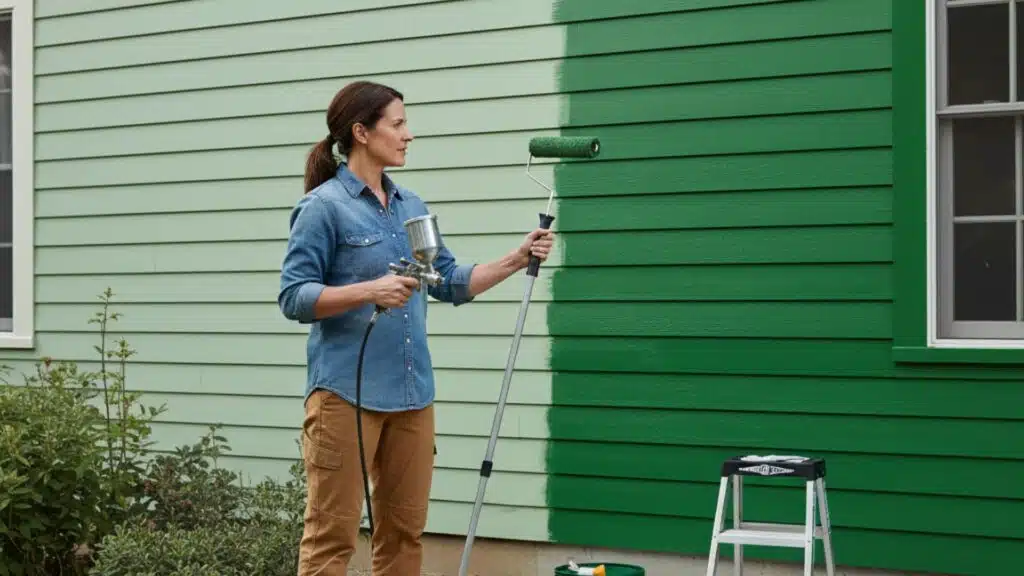
Painting vinyl siding makes perfect sense when your color has faded badly or looks outdated and tired. If your siding is still in good structural condition without cracks or warping, painting offers great results.
A fresh coat of paint gives you a complete color refresh without the high cost of replacing everything. This saves thousands of dollars while dramatically improving your home’s curb appeal and overall appearance.
However, avoid painting if your siding is brittle, cracked, or has moisture damage underneath that needs fixing. Check your warranty too, as painting might void it and leave you without coverage for future problems.
Pros and Cons of Painting Vinyl Siding
Every home improvement project comes with advantages and disadvantages you should weigh before starting the work. Understanding both sides helps you make an informed decision about painting your vinyl siding:
| Pros | Cons |
|---|---|
| Much cheaper than replacing siding and saves thousands of dollars on installation costs | May void the manufacturer’s warranty and leave you without coverage for future siding issues |
| Refreshes curb appeal instantly and makes your home look updated and well-maintained | Paint can fade faster in strong sunlight, especially in hot climates with intense UV exposure |
| A wide variety of color options are available that aren’t offered in standard vinyl siding | Poor prep or wrong paint can cause peeling, bubbling, and an unprofessional finished appearance |
| Protects siding from UV and weather wear, extending its lifespan by several years | Dark colors can cause warping from heat absorption, as vinyl expands in high temperatures |
Weighing these factors against your budget and siding condition helps determine if painting is right for you. Most homeowners find that the benefits outweigh the drawbacks when siding is structurally sound and properly prepared.
Materials You’ll Need
Gathering all your materials before starting makes the painting process smoother and prevents frustrating trips to the store. Here’s everything you need to paint your vinyl siding successfully:
- Exterior vinyl-safe paint (like Sherwin-Williams Resilience or Benjamin Moore)
- Primer (optional for dark-to-light color changes)
- Paint sprayer, roller, and paintbrush
- Painter’s tape and plastic sheeting
- Cleaning solution (Crud Cutter or similar)
- Scrub brush or sponge
- Bucket and water supply
- Microfiber cloths for wiping
- Ladder (for higher areas)
Having these supplies ready saves time and helps you work more efficiently throughout the entire project. Quality materials make a noticeable difference in how your finished siding looks and how long the paint lasts.
How to Paint Vinyl Siding: Step-by-Step Process
Painting vinyl siding requires careful preparation and patience to achieve a smooth, lasting finish on your home. If you’re wondering can vinyl siding be painted, follow each step below to transform your siding like a professional:
Step 1: Clean The Vinyl Siding
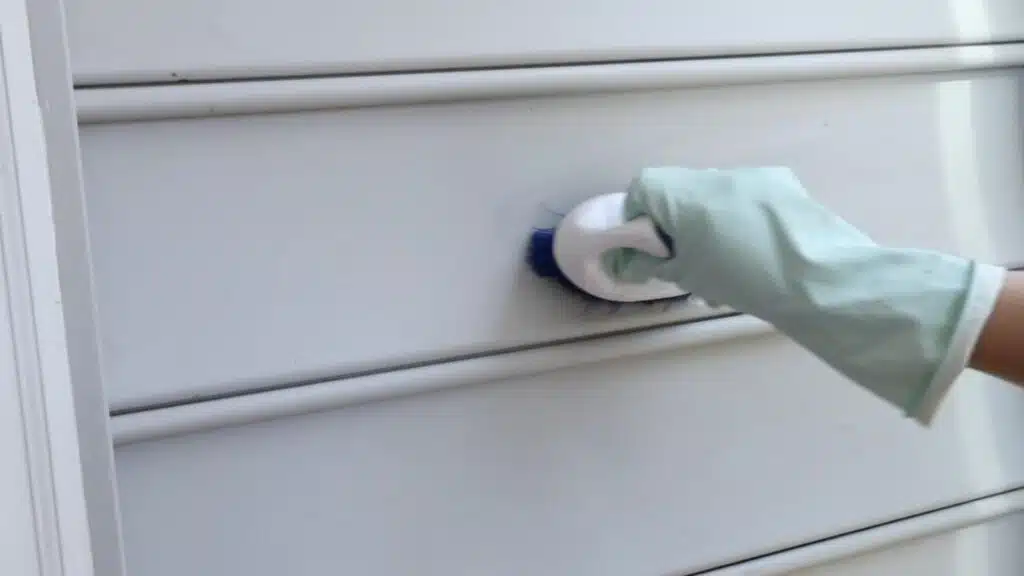
Start by cleaning your vinyl siding to remove dirt, mildew, or chalky residue. Mix a mild cleaner like Crud Cutter with water. Scrub the surface using a soft brush or sponge.
If you’re painting a large area, a pressure washer works faster. Always rinse well with clean water and let the siding dry completely before painting. Clean siding helps the paint stick better and last longer.
Step 2: Prep For Painting
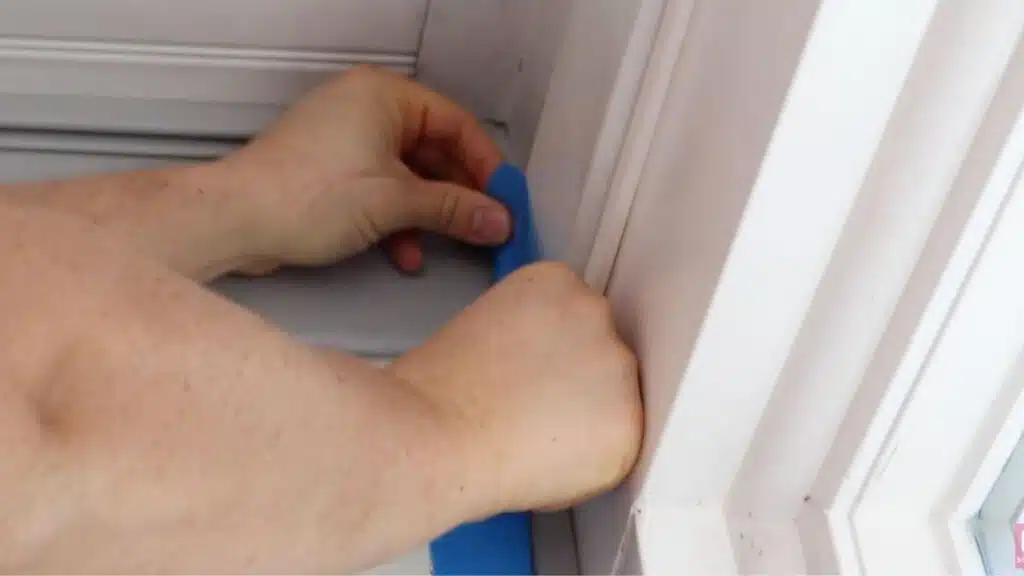
Use painter’s tape to protect windows, doors, and edges. If you’re using a paint sprayer, cover nearby areas with plastic sheets. Check for cracks or damage and fix them before painting.
Take your time during this step; it helps you get clean lines and saves you from touch-ups later. A little prep now saves a lot of effort later.
Step 3: Cut In The Hard-To-Reach Areas
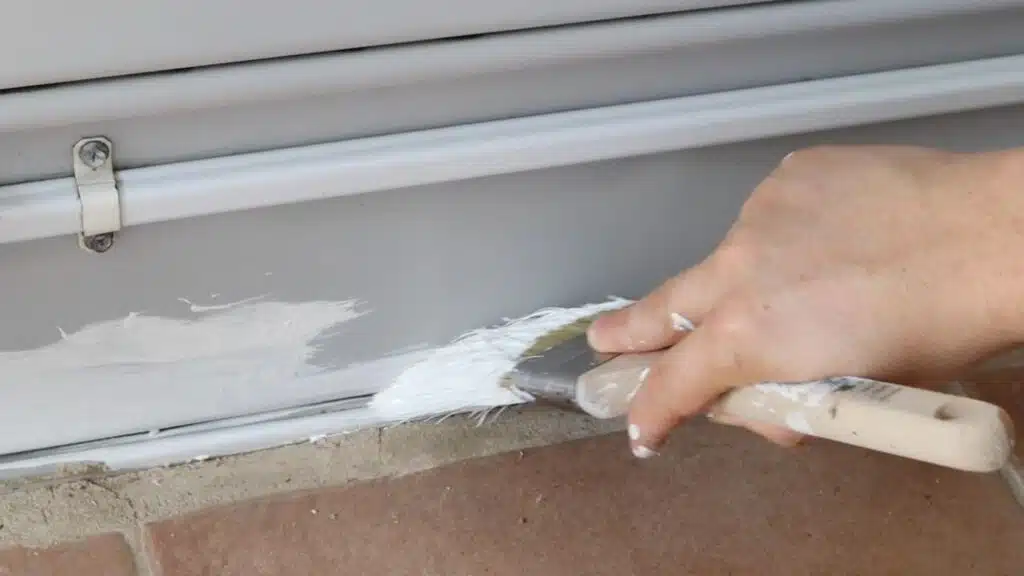
Use a small paintbrush to “cut in” around corners, windows, and trim. This means painting the edges first before rolling.
If you’re changing from a dark to a light color, applying primer helps reduce the number of coats needed later. For smaller projects, you might skip primer, but it’s worth it for large color changes. Take your time and make each stroke smooth.
Step 4: Paint The Vinyl Siding
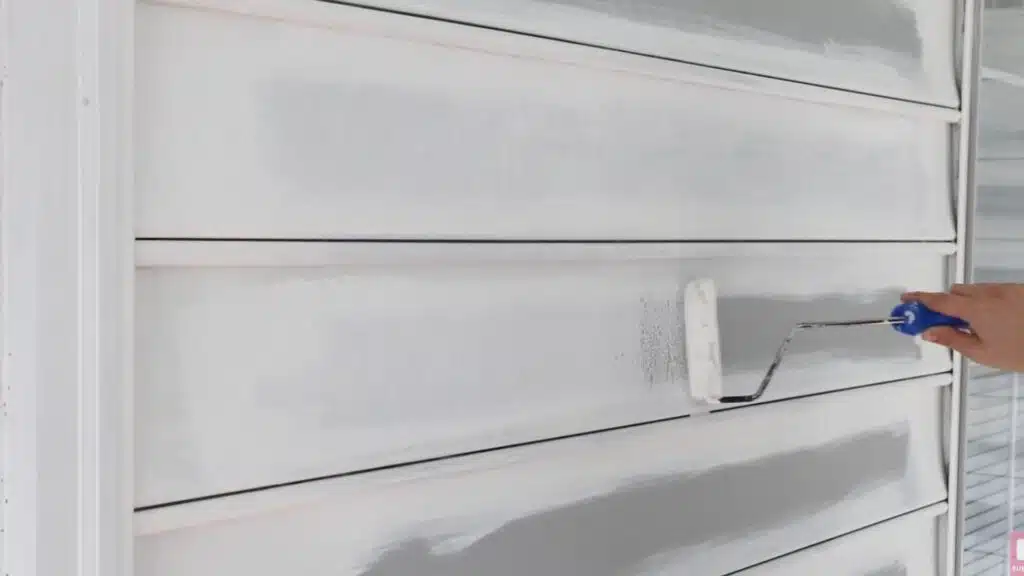
Use a small roller or a paint sprayer to cover the larger surfaces. A sprayer gives a smoother, more even finish. Apply thin coats instead of thick ones to avoid drips.
Let each coat dry before adding the next. You’ll likely need two to three coats for solid coverage, especially when switching from dark to light colors.
Step 5: Let The Paint Dry And Enjoy The Results
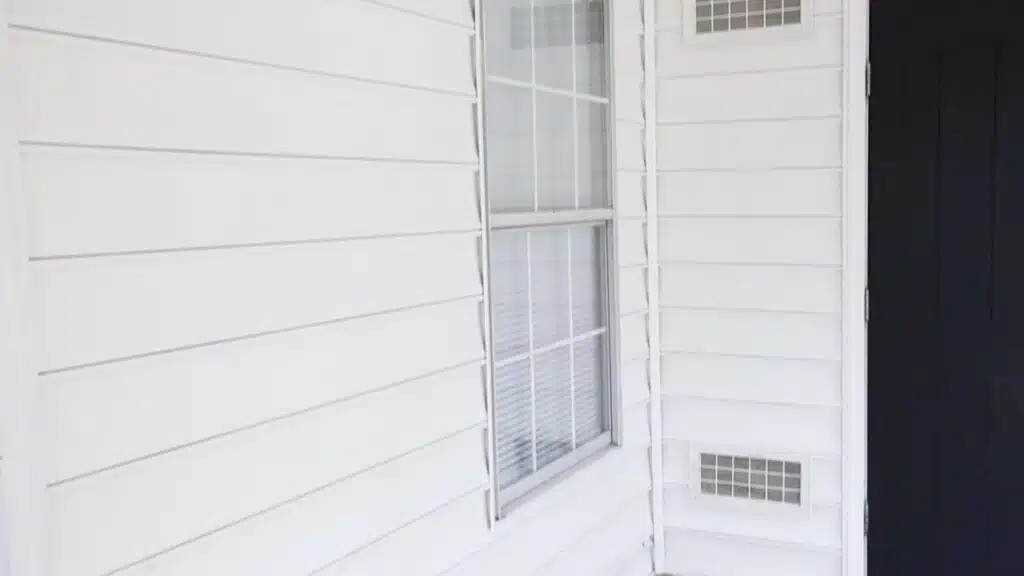
Once you’re done painting, let the siding dry completely. Avoid touching or cleaning it for at least 24 hours.
Step back and check for missed spots after it dries. Add a final coat if needed. When finished, you’ll have clean, bright siding that looks brand new and fresh.
For more information, watch the complete video explanation by Angela Marie Made.
Top Paint Brands for Vinyl Siding
Choosing a quality paint brand designed for vinyl siding ensures your paint job lasts longer and looks better. Here are the best paint brands with features and pricing to help you decide:
| Brand | Key Features |
|---|---|
| Sherwin-Williams | Offers VinylSafe paint colors designed for vinyl siding; resists warping/fading; durable; low maintenance. |
| Benjamin Moore | Strong adhesion, color-lock tech; eco-friendly; vibrant, lasting colors; variety of finishes. |
| Behr | Durable paint with fade and mildew resistance; fast drying; affordable; easy to apply. |
| Valspar | Budget-friendly; good durability; low VOC; smooth application; good for DIY/professionals. |
| Farrow & Ball | Premium with high pigment, rich colors, subtle sheen, and costly but distinct architectural finishes. |
Each brand offers different benefits depending on your budget and performance expectations for the project. Match your paint choice to your climate, color preferences, and how long you expect the finish to last.
How Long Does Paint Last on Vinyl Siding?
Paint on vinyl siding typically lasts between 7 and 10 years when you use quality paint and prepare properly. Several factors affect how long your paint job holds up before needing another fresh coat.
Sun exposure plays a huge role, as constant UV rays fade colors faster and break down paint over time. The quality of paint you choose and proper surface preparation also significantly impact durability over the years.
Keep your painted siding clean by washing it annually with mild soap and water solutions. Avoid harsh chemicals that strip protective layers and shorten your paint’s lifespan unnecessarily over time.
Common Mistakes to Avoid When Painting Vinyl Siding
Many DIY painters make avoidable errors that ruin their vinyl siding paint jobs and waste time and money. Learning what not to do helps you achieve professional results that last for years:
- Painting over dirty or wet surfaces: Always clean and completely dry your siding first, or paint won’t adhere properly and will peel quickly.
- Using non-vinyl-safe or dark paints: Regular paint or colors too dark can cause warping since vinyl expands when it absorbs heat.
- Ignoring temperature and humidity levels: Paint only when temperatures are between fifty and eighty-five degrees with low humidity for best results.
- Skipping prep or rushing drying time: Proper preparation and patience between coats prevent peeling, bubbling, and an unprofessional finish that looks terrible.
Avoiding these common mistakes saves you from costly do-overs and ensures your painted siding looks great longer. Take your time and follow proper procedures for results that make your home stand out beautifully.
Cost of Painting Vinyl Siding vs. Replacing It
Painting vinyl siding costs between $1.50 and $3.50 per square foot, making it a more affordable short-term fix. It’s ideal if your siding is still in good shape but just needs a fresh look.
Replacing vinyl siding is more expensive, averaging $6 to $12 per square foot, including materials and labor.
While replacement costs more upfront, it can last 20 to 40 years with little maintenance. Painting usually lasts 5 to 10 years before needing a refresh.
Choosing between them depends on your budget, the condition of your siding, and how long you plan to stay in your home.
These costs are estimated and may vary based on your location, retailer, brand availability, and current market conditions.
Final Thoughts
Now you know the complete answer to “Can you paint vinyl siding?” and how to do it right. Painting offers a cost-effective way to refresh your home’s exterior when siding remains structurally sound and properly prepared.
Remember that success depends heavily on choosing vinyl-safe paint and taking time with surface preparation steps.
Rushing through cleaning or skipping crucial prep work quickly leads to peeling paint and wasted money.
Your climate, sun exposure, and color choices all affect how long your paint job lasts overall. Your home deserves a fresh look that fits your budget and saves thousands on replacement. Share your vinyl siding painting questions or experiences in the comments below!














